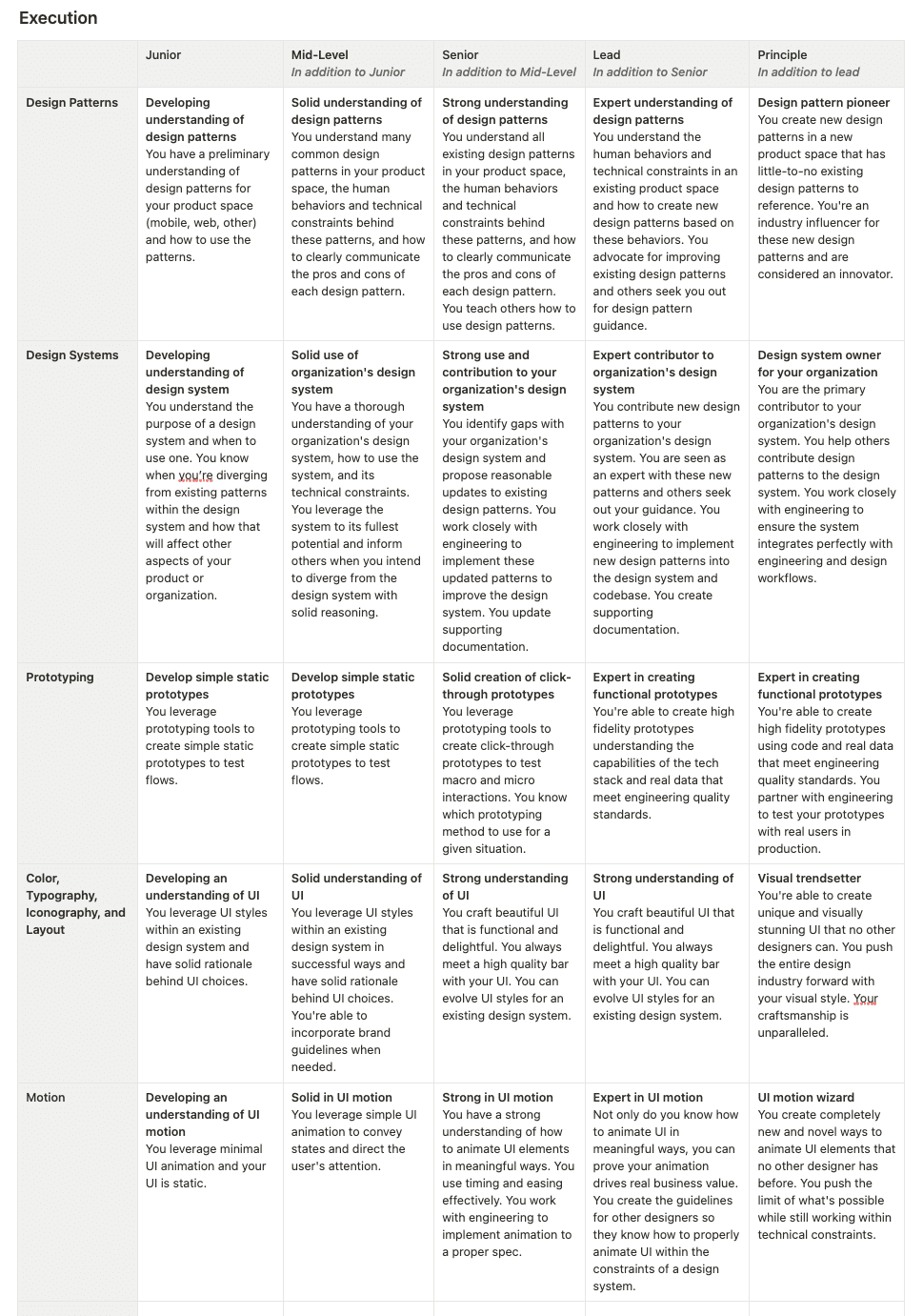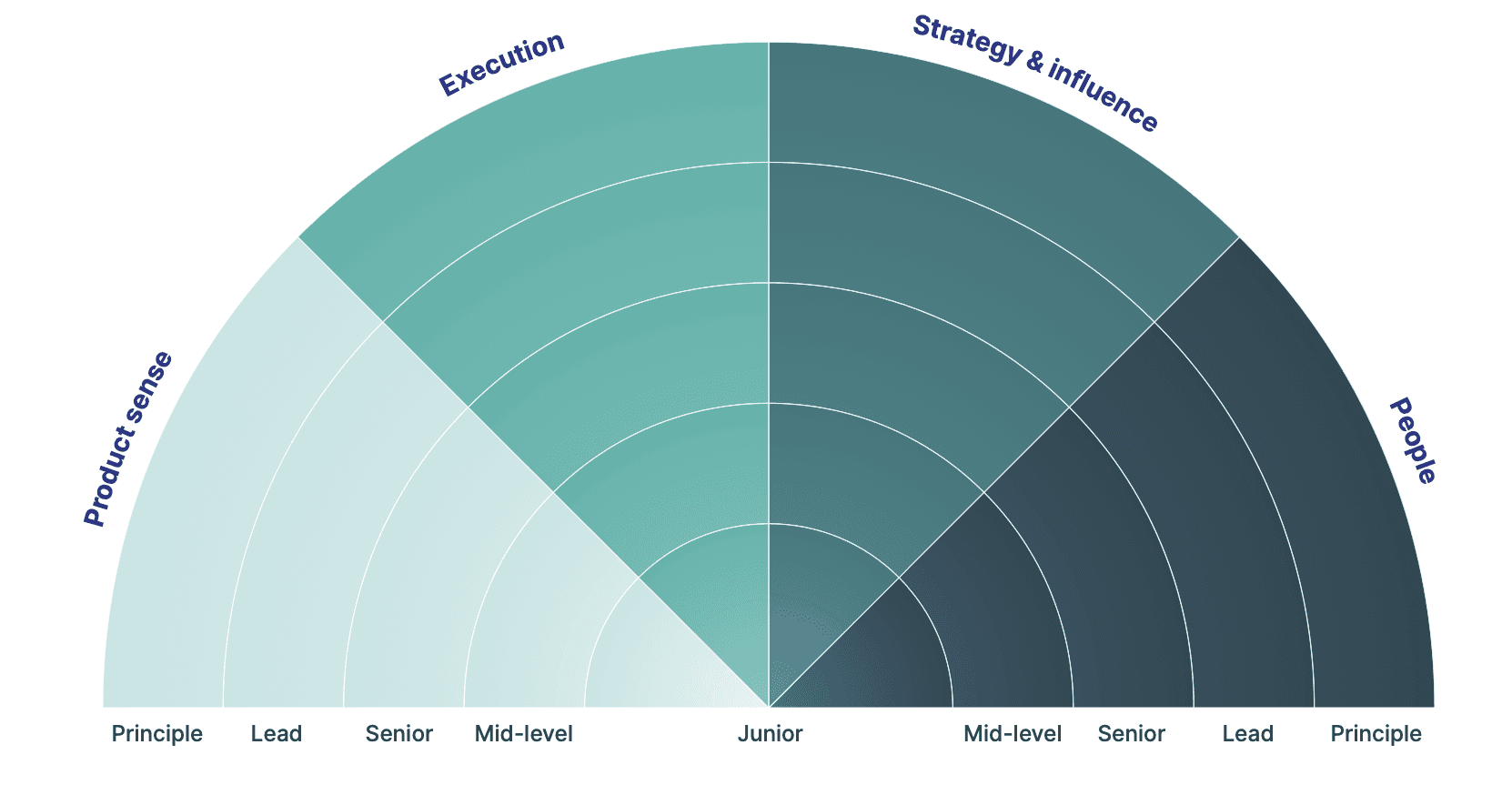My role & overview
As a Product Design Manager, I undertook the task of creating career pathing documentation for product designers within my organization. I conducted extensive research independently and carefully aligned the project with the company's values and principles. Drawing on my expertise in product design, I defined the various levels and competencies necessary for each career stage.
The goal was to provide clear guidance on career progression and enable new hires to understand their growth opportunities. Additionally, the documentation would be used for bi-annual reviews to evaluate the development of existing designers.
Challenges
Creating career pathing documentation was a net new initiative in the organization. I had to invest significant time and effort into research and learning to ensure the documentation was comprehensive and aligned with industry best practices. It was crucial to strike a balance between the specific needs of the organization and the broader trends and expectations in the field of product design.
Solution
I conducted extensive research and analyzed career ladders from other companies to develop career pathing documentation. This allowed me to gather insights and best practices while incorporating my own perspective. I aligned the documentation with the organization's values and principles, ensuring that it reflected the unique culture and goals of the company. The resulting career pathing documentation included clear and concise guidelines for each level of the product design career, highlighting key differences in scope, ownership, autonomy, expertise, strategy, leadership, influence, and eligibility for the manager track.
Results & impact
The career pathing documentation was well-received by my team of product designers. They appreciated a structured guide outlining the expectations and growth opportunities under my leadership. The documentation provided clarity on the competencies and skills required to progress to higher levels within the organization. It empowered designers to set clear development goals and facilitated more meaningful discussions during bi-annual reviews. Overall, the career pathing documentation contributed to a more transparent and growth-oriented culture within the product design team.
Levels Key Differences: This table outlines the key differences between different levels of product designers, including Junior, Mid-Level, Senior, Lead, and Principle. It highlights variations in scope, ownership, autonomy, expertise, strategy, leadership, influence, and eligibility for the manager track.
Product Sense: This table focuses on product sense competency and describes the expected level of understanding and contribution at each career stage. It covers areas such as user understanding, business understanding, and product strategy, outlining the progression from developing an understanding to influencing the organization's long-term strategy.
Execution: The execution table examines various aspects of execution in product design, such as design patterns, design systems, prototyping, color, typography, iconography, layout, and motion. It showcases the expected level of proficiency and contribution for each career stage, ranging from developing an understanding to becoming a pioneer or wizard in the respective areas.
Strategy & Influence: The strategy & influence table delves into competencies related to the design process, communication, collaboration, and leadership. It illustrates the progression from developing these competencies to becoming an expert influencer, owning design processes, and collaborating at a massive scale.
People: The people table explores the leadership competency within the people-focused aspect of product design. It outlines the development of leadership skills and responsibilities, ranging from developing ownership of workload to collaboration at a massive scale.
Summary
The outcomes of this initiative were exceptionally positive, with my team expressing their appreciation for the clear and concise guidance provided to navigate their growth as product designers under my leadership. The career pathing documentation not only offered a roadmap for their professional development but also fostered meaningful discussions during bi-annual reviews, enabling a comprehensive evaluation of their progress and potential.
The base framework for this career pathing was adapted from Intercom






